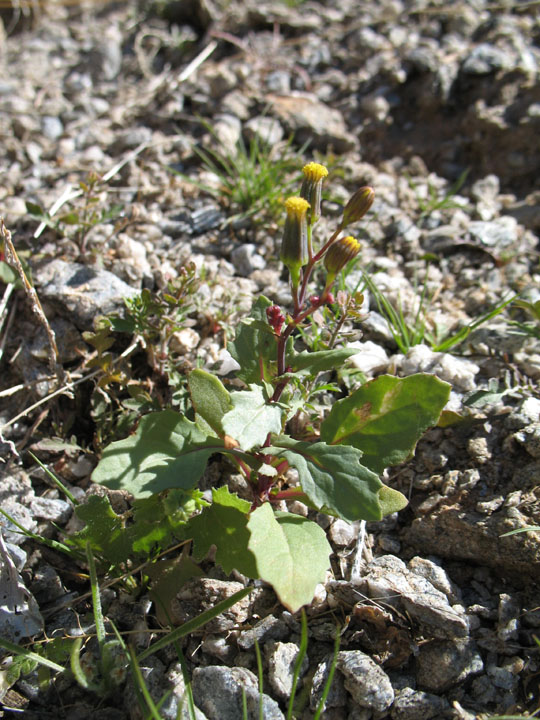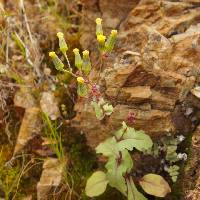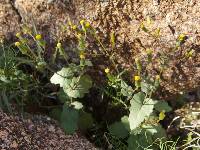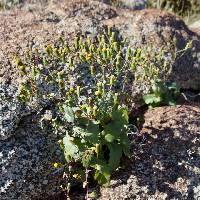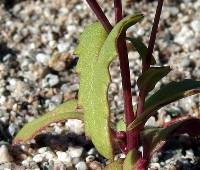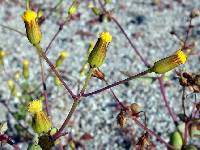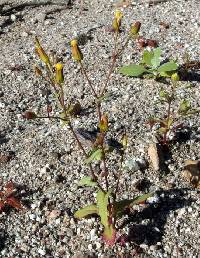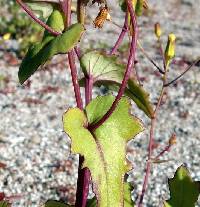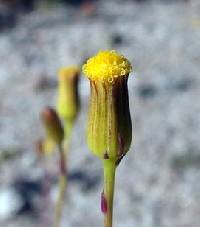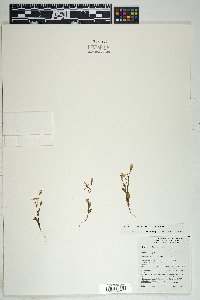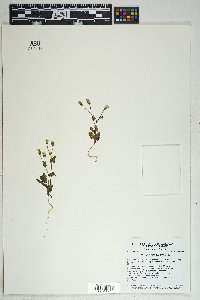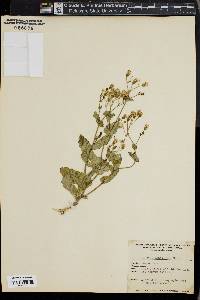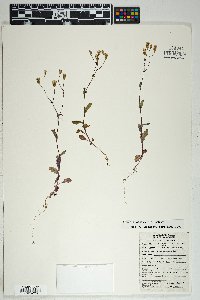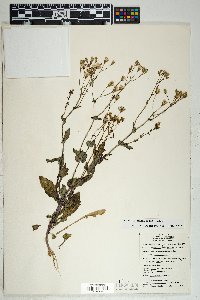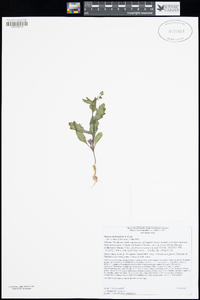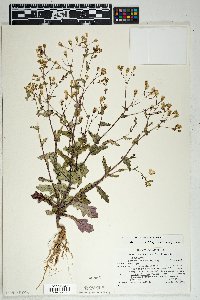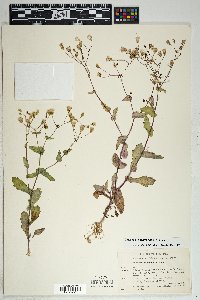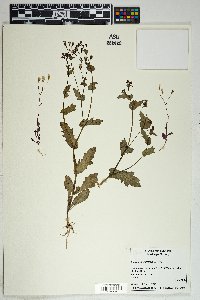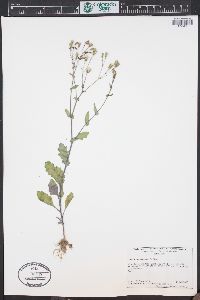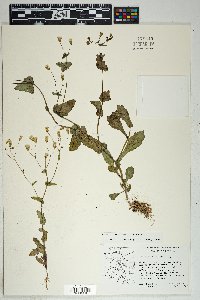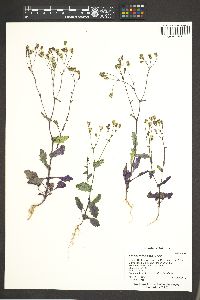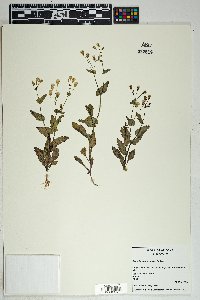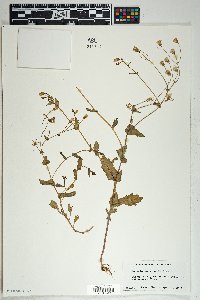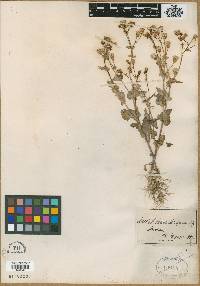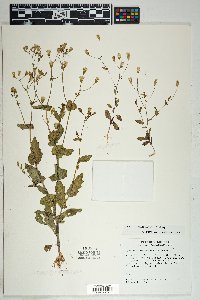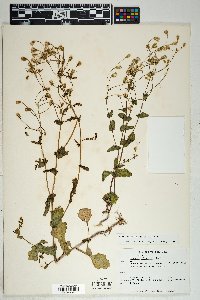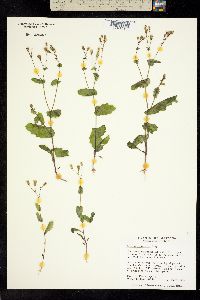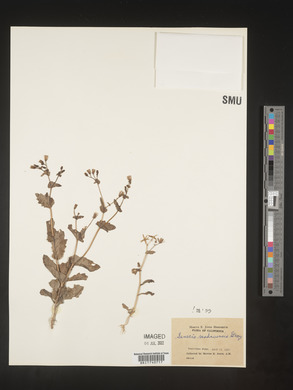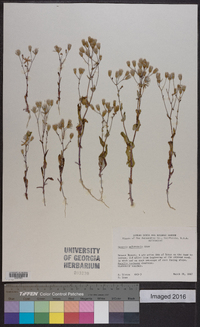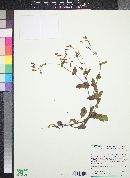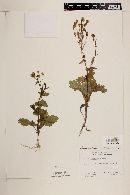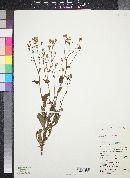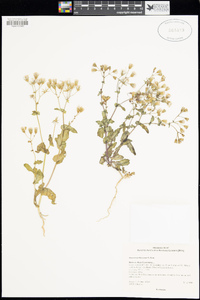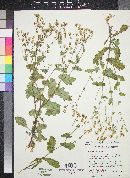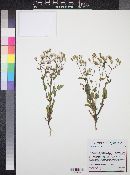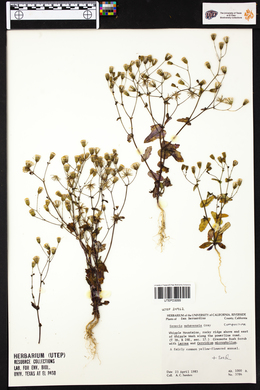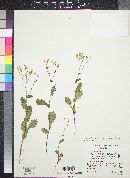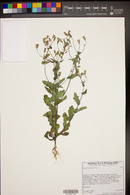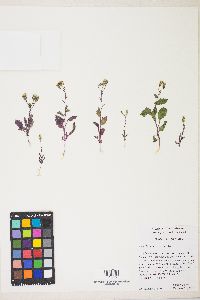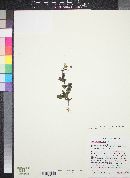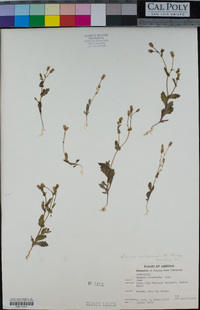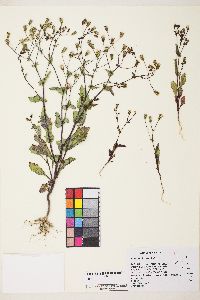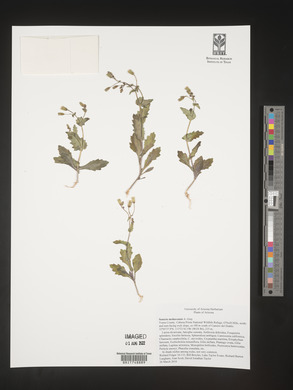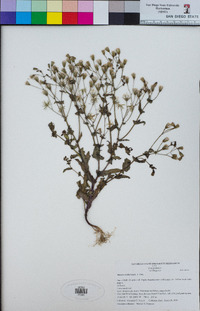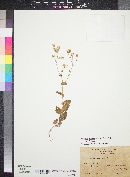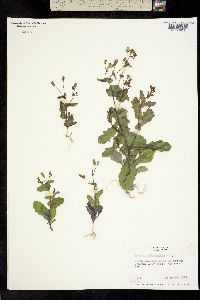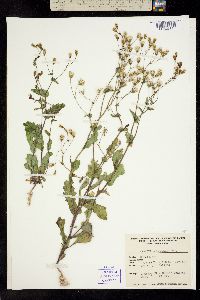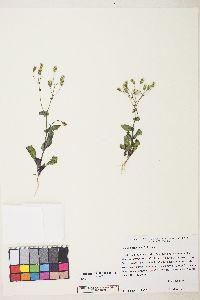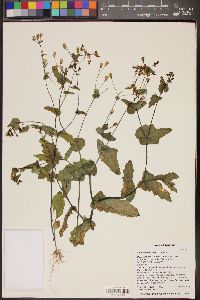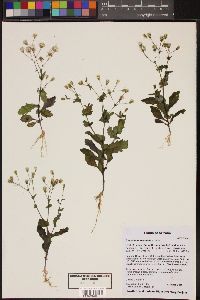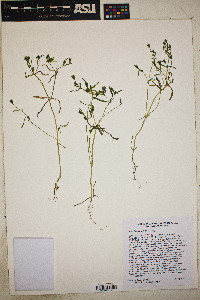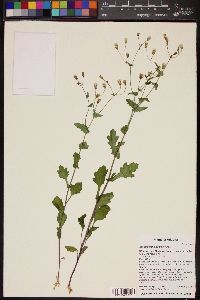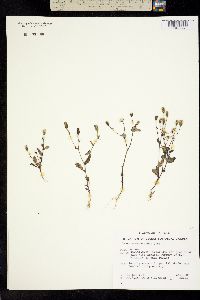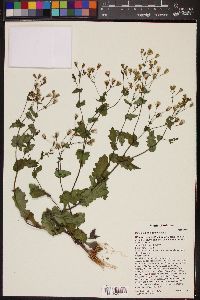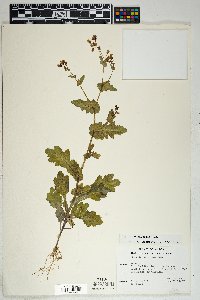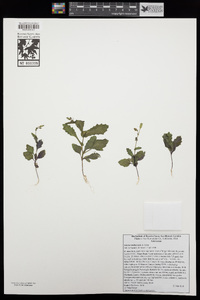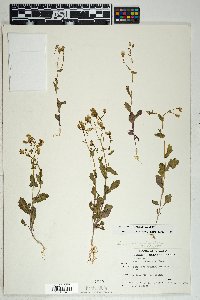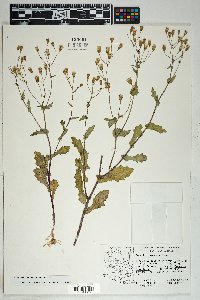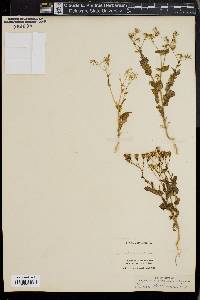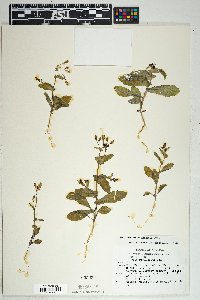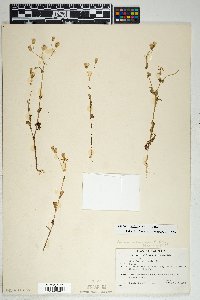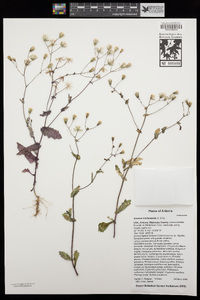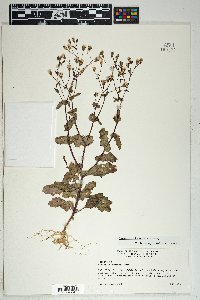Senecio mohavensis
|
|
|
|
Family: Asteraceae
Mojave Ragwort, more...Mohave groundsel
|
Annuals, 10-30(-40) cm (taproots often twisted). Herbage (sometimes purple-tinged) glabrous. Stems usually 1 (freely branching upward). Leaves equally distributed; petiolate; blades ovate to obovate, 2-6 × 0.5-2(-4) cm, bases tapered, margins coarsely lobed or irregularly dentate (mid and distal leaves similar, bases expanded, truncate to cordate, clasping, 1-2 cm across). Heads 3-10 in loose, cymiform arrays. Calyculi of 3-5+ lance-linear bractlets. Phyllaries ± 8 or ± 13, 6-7 mm, tips green. Ray florets 0 or 1-3+; corolla laminae 0.1-1 mm (little expanded, barely, if at all, surpassing phyllaries; sometimes laminae 0 and heads perhaps technically disciform). Cypselae hairy. 2n = 40. Flowering spring. Sandy or rocky washes, desert flats; 100-700 m; Ariz., Calif., Nev.; Mexico (Sonora). Senecio mohavensis is similar to S. flavus (Decaisne) Schultz-Bipontinus of the Mediterranean region and southwest Asia, which raises phytogeographic questions (cf. A. Liston et al. 1989; Liston and J. W. Kadereit 1995; M. Coleman et al. 2001). The last cited study showed that a previously recognized variety of S. flavus is more closely related to S. mohavensis than to S. flavus and a new combination was made: S. mohavensis subsp. brevifolius (Kadereit) M. Coleman.
FNA 2006, Jepson 2012, Kearney and Peebles 1969 Duration: Annual Nativity: Native Lifeform: Forb/Herb General: Herbaceous annuals, to 40 cm tall, stems usually solitary and freely branching upward, herbage glabrous and sometimes purple-tinged, plants often with twisted taproots. Leaves: Alternate, oblong, or oblong-ovate to obovate, 2-6 cm long and 0.5-4 cm wide, blades thickish, with tapered bases, margins coarsely lobed or irregularly dentate, faces subpalmately to pinnately nerved, mid and distal leaves similar but clasping, 1-2 cm across and with truncate to cordate, expanded bases, other blades petiolate and equally distributed along the stems. Flowers: Yellow in disciform or discoid heads, florets 3-15 or more, disk florets yellow, 15-30, pistillate (outer) florets also yellow, 0-8, with 0-8 with narrowly tubular corollas and minute rays (0-2 mm long), these barely surpassing phyllaries, involucres cylindric or urn-shaped, phyllaries green or red-tinged with green tips, 8 or 13 (sometimes more or less), 6-7 mm long, outer phyllaries inconspicuous and much smaller than inner, calyculi of 3-5(or more) lance-linear bractlets, heads borne in loose, cyme-like clusters. Fruits: Cypselae cylindric or prismatic, 1.5-3 mm long, usually 5-ribbed or -angled, surfaces hairy. Pappi usually persistent, sometimes readily falling, of 30-80 or more, white to stramineous, barbellulate to smooth bristles. Ecology: Found on sandy soils, in rocky washes and desert flats, rocky slopes and canyon bottoms, from 300-2,500 ft (91-762 m); flowering March-May. Distribution: Arizona, California, Nevada; Mexico. Notes: This Senecio looks similar to a dandelion in bud at first, the thickish, clasping leaves and differing flowers help to distinguish this species. The phyllaries or calyculi are persistent, and may help identify this species when not in flower (along with the clasping cauline leaves). The disciform head is a special derivative of the radiate type which resembles the discoid head in lacking the marginal rays but the outer flowers are pistillate, with a tubular, rayless corolla. Kearney and Peebles note this species occurring in Pinal, Pima, and Yuma counties. Keys to this species are the glabrous herbage, the annual lifespan the disciform head, and the oblong to oblong-ovate leaves 2-6 cm long. Ethnobotany: Specific uses for this species are unknown, but other species in the genus have uses; the plants were used as medicine and food and the latex was used as chewing gum. Synonyms: None Editor: LCrumbacher2012 Etymology: Senecio comes from senex, "old man," referring to the gray hairs on the seed, while mohavensis means of or from Mojave. |
|
|
|

